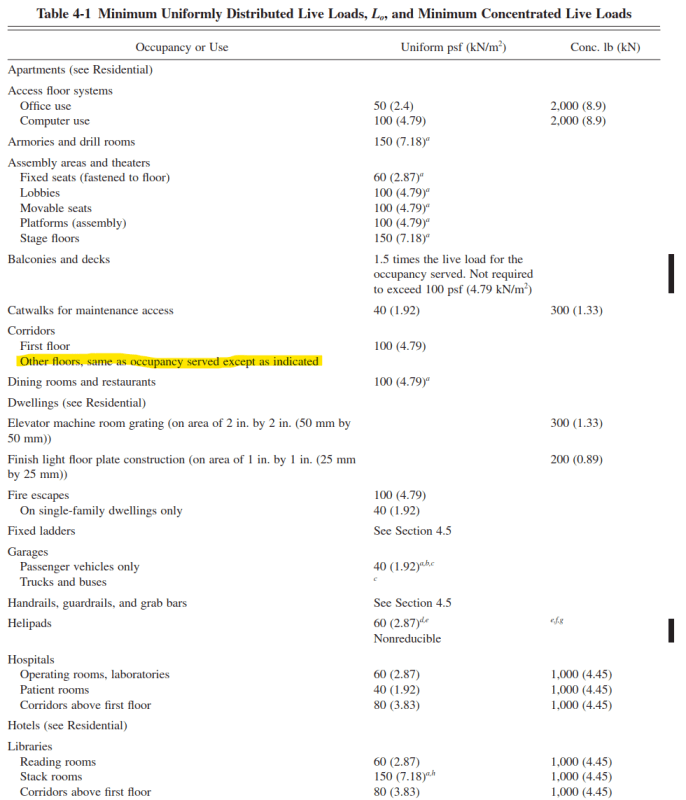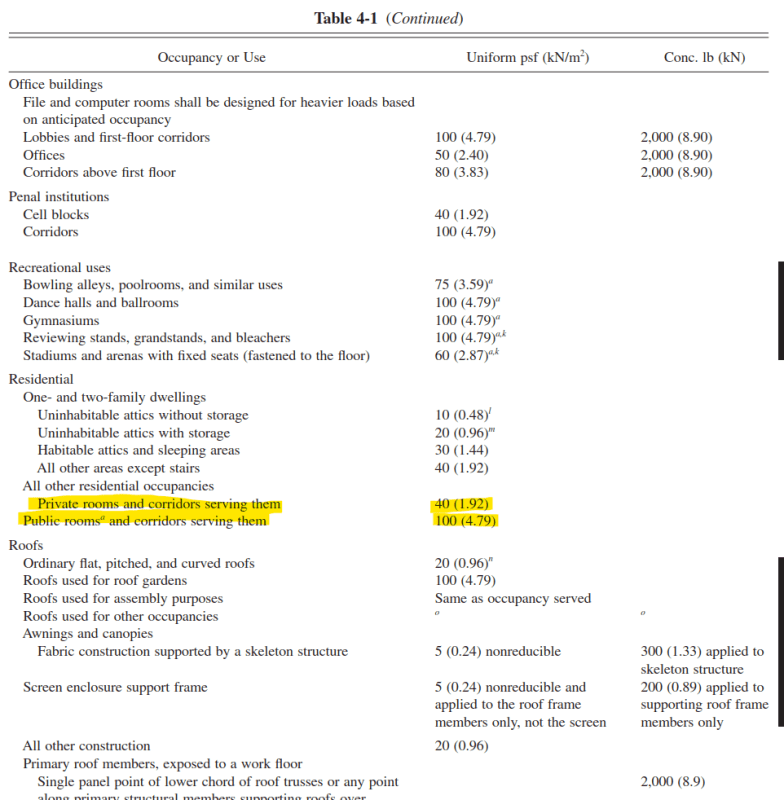Iasonasx
Structural
- Jun 18, 2012
- 119
I was asked to check if the columns of a 30-story condominium building are properly designed to today's standards to carry the loads they are supposed to. I can use the ASCE 7-22 for the live load reduction etc, but I am not sure if I should just stick to a 40 psf load for Live load value that is the minimum we recommend. I never design for minimum even though I know that statistically that is already actually very conservative. Sure we have 100 psf for corridors, but even with that, in a plan that looks more like a labyrinth with corridors going around and units in really odd forms, I wonder if I could get a general idea of what is a good average value to consider. With design specifications for f'c of 3ksi, I am skeptical about how conservative I should be. Any suggestions?



